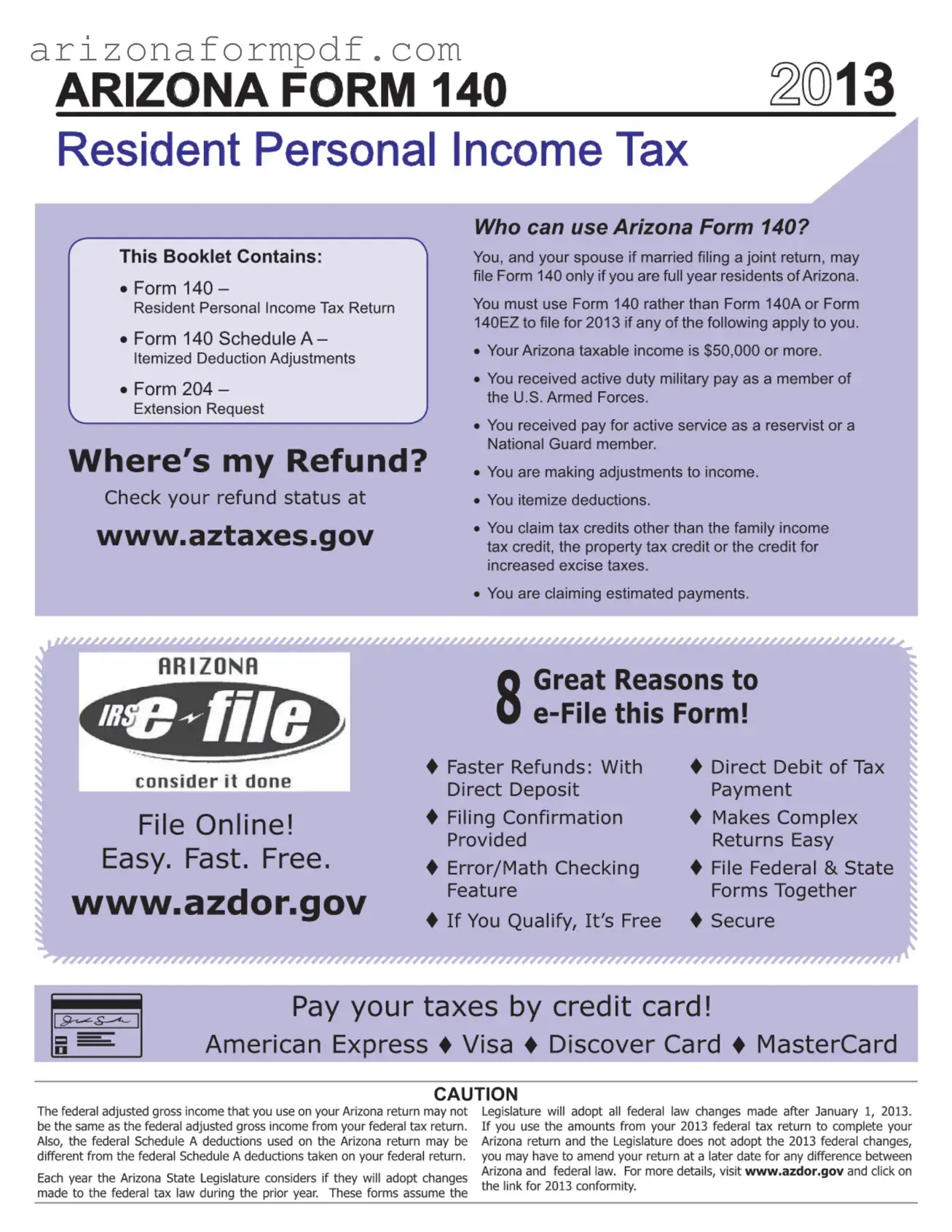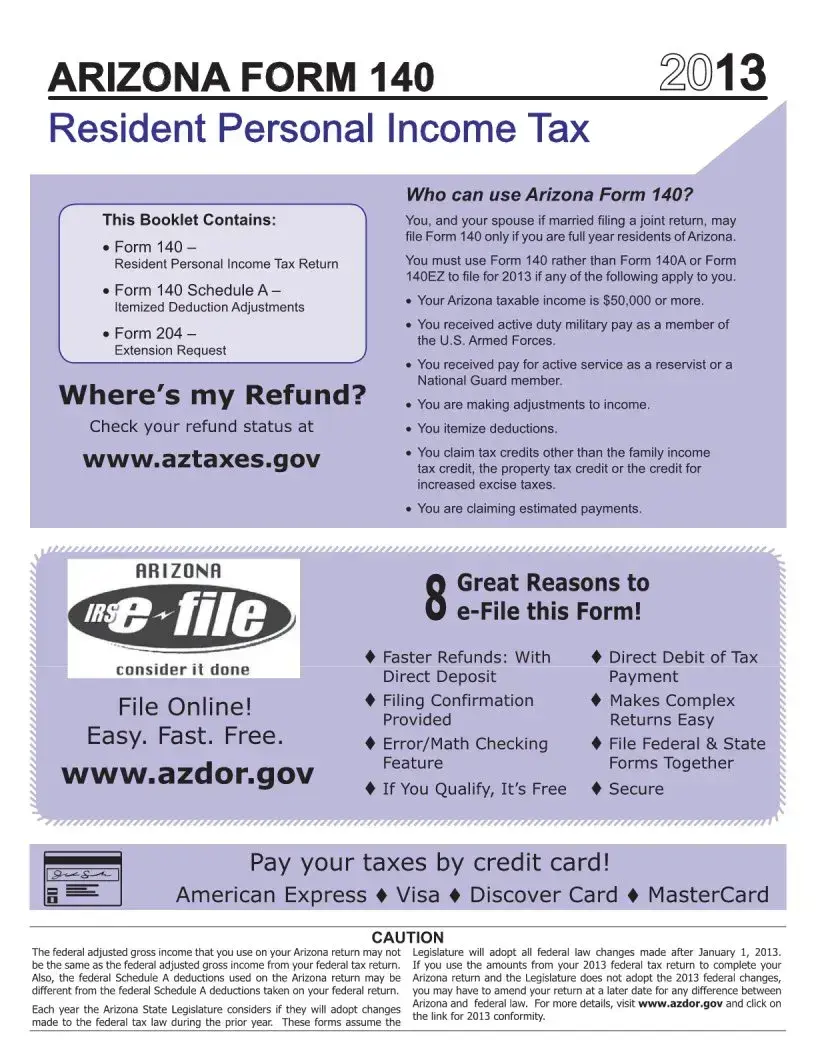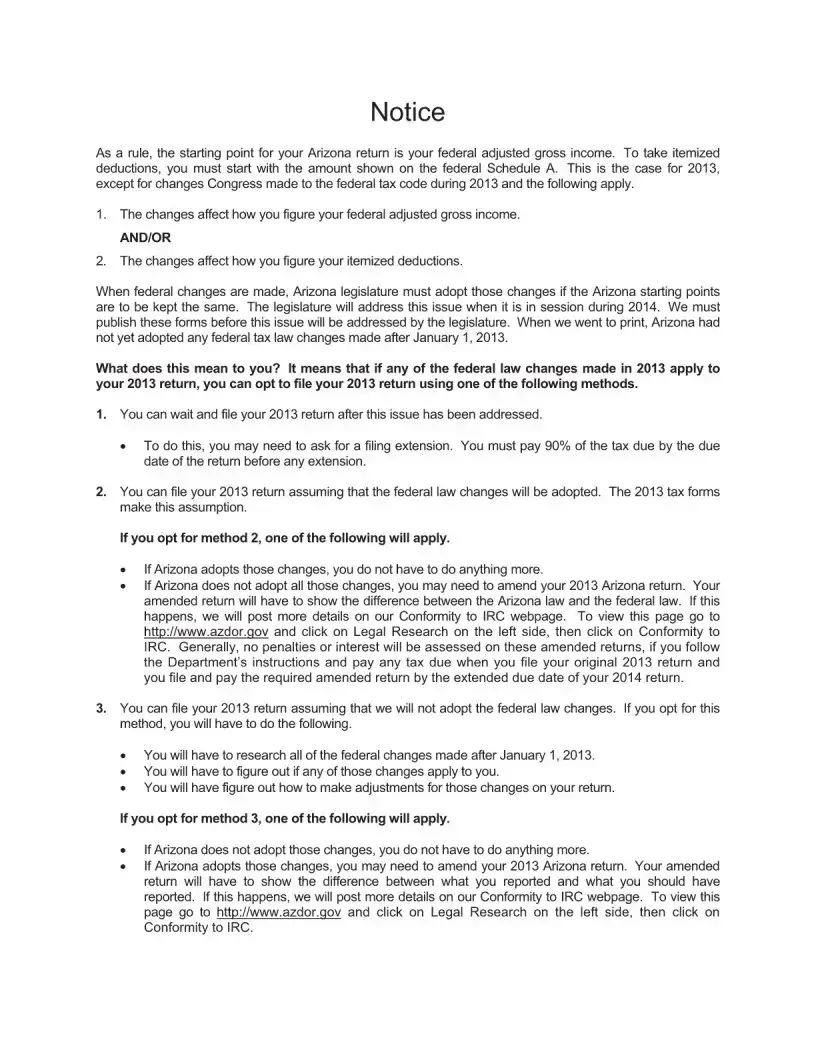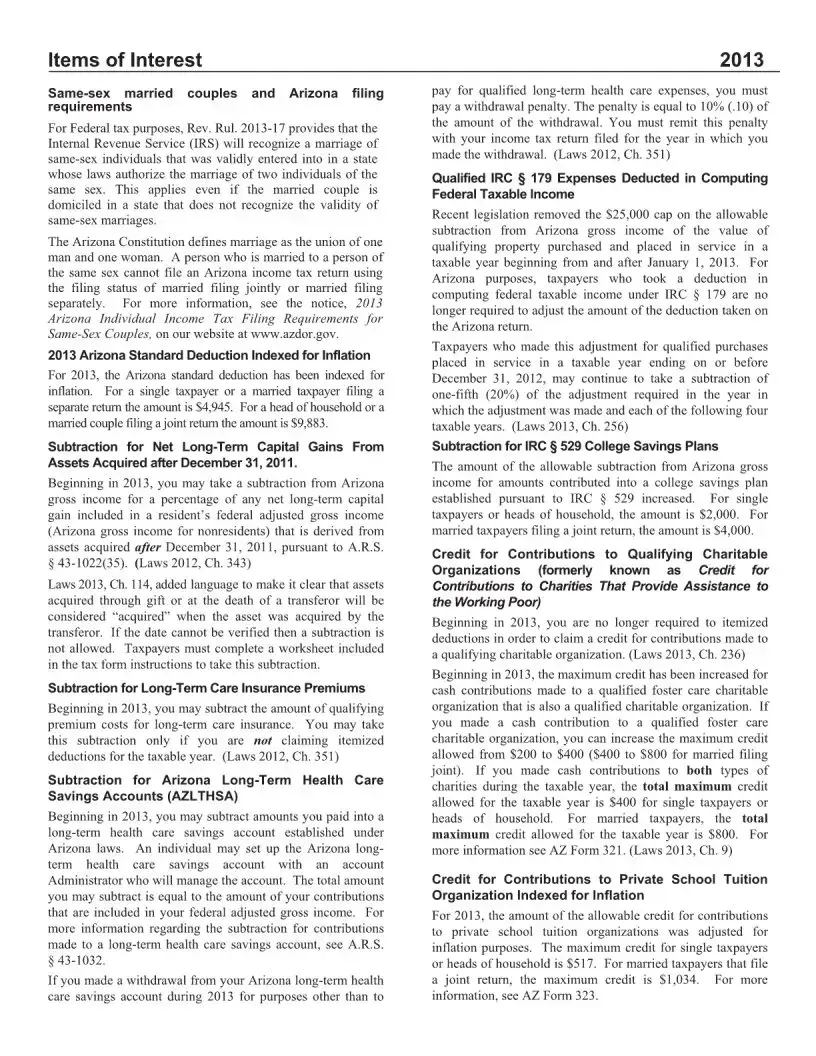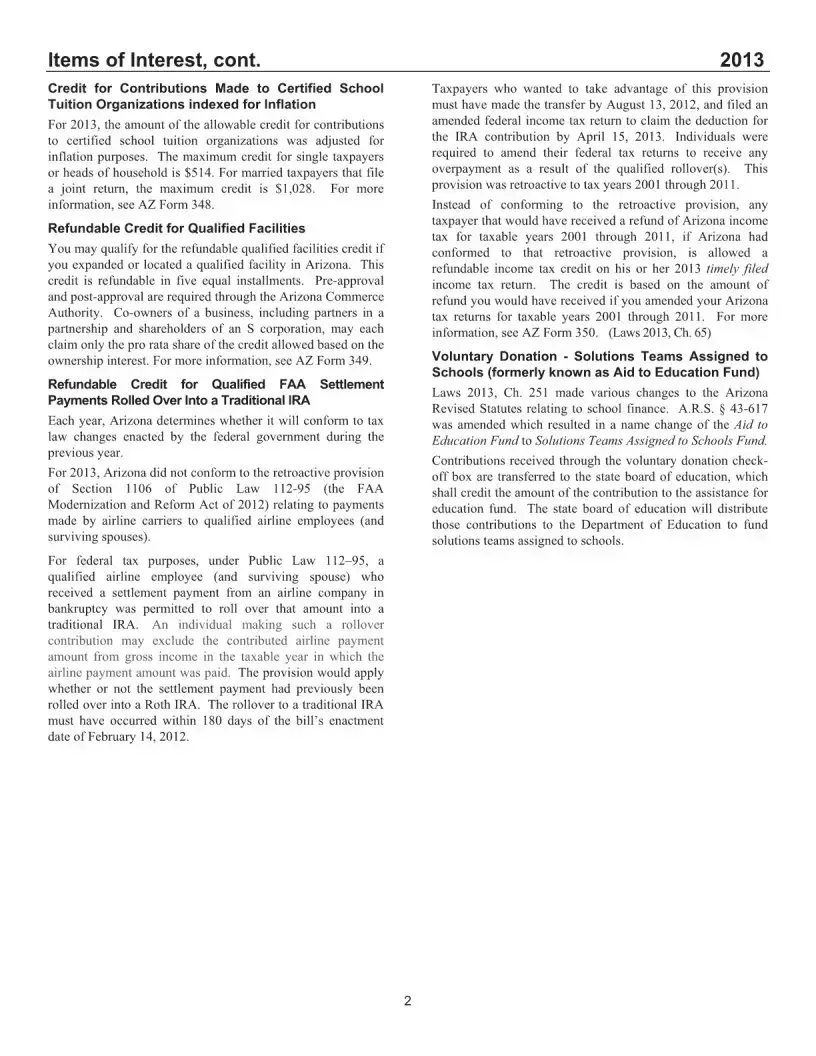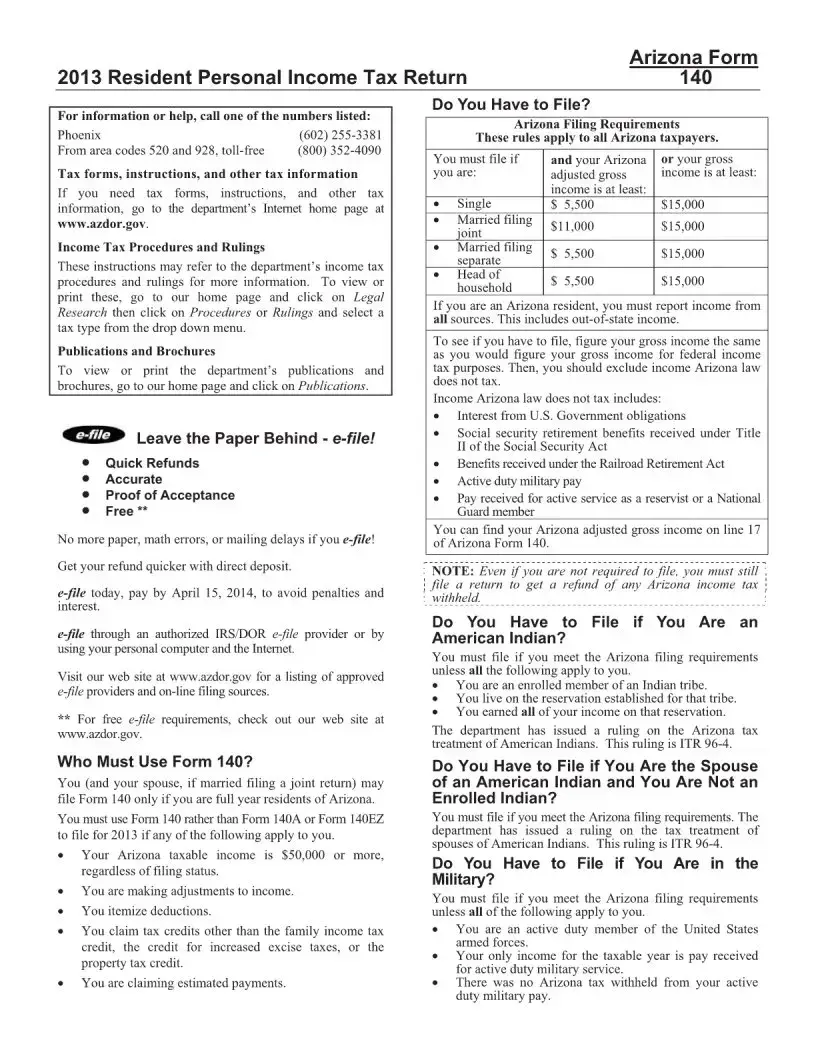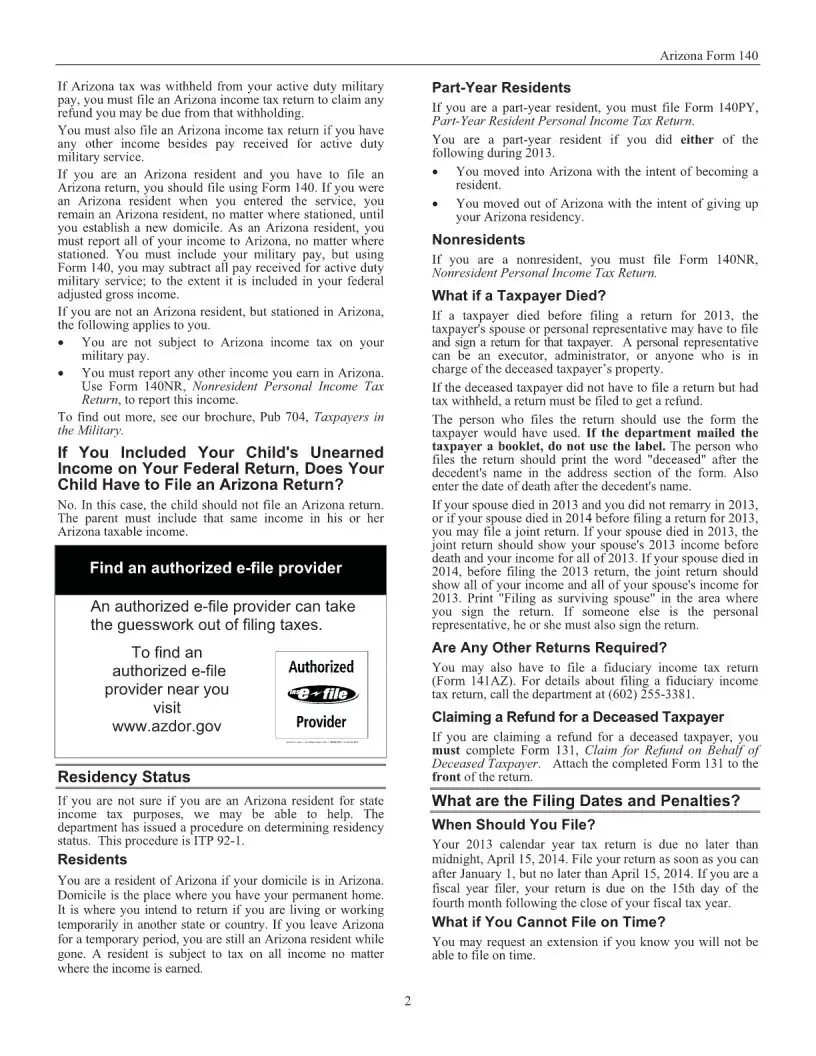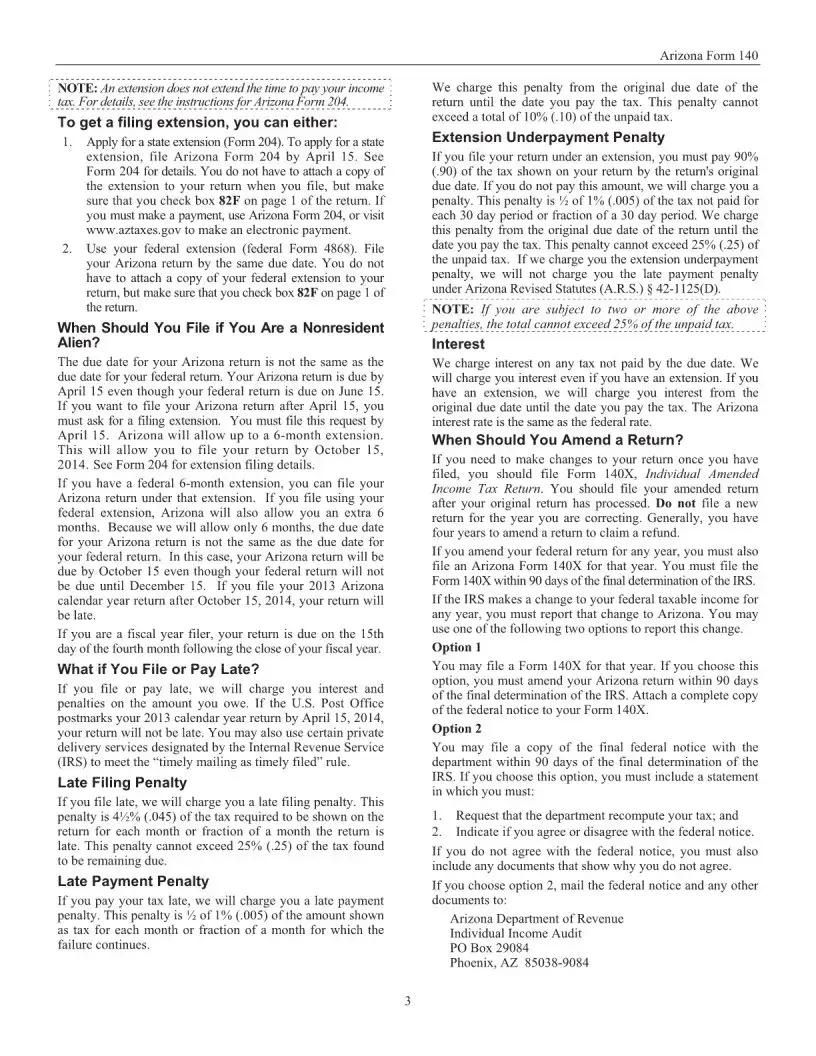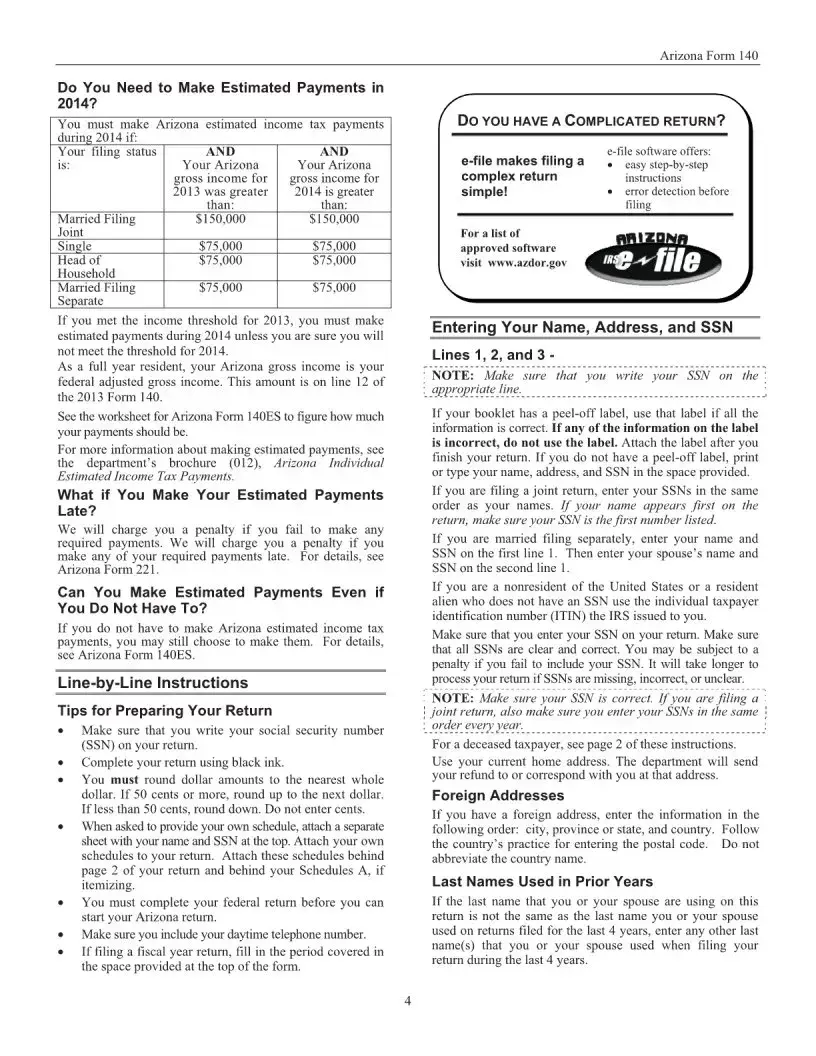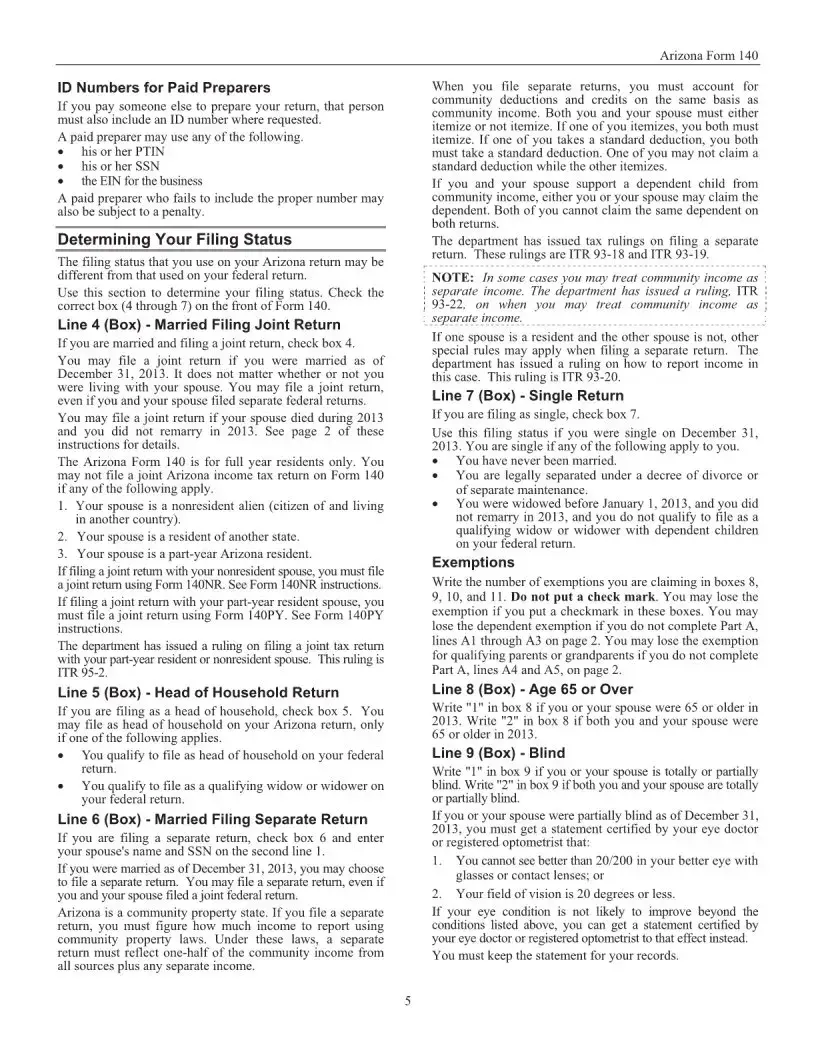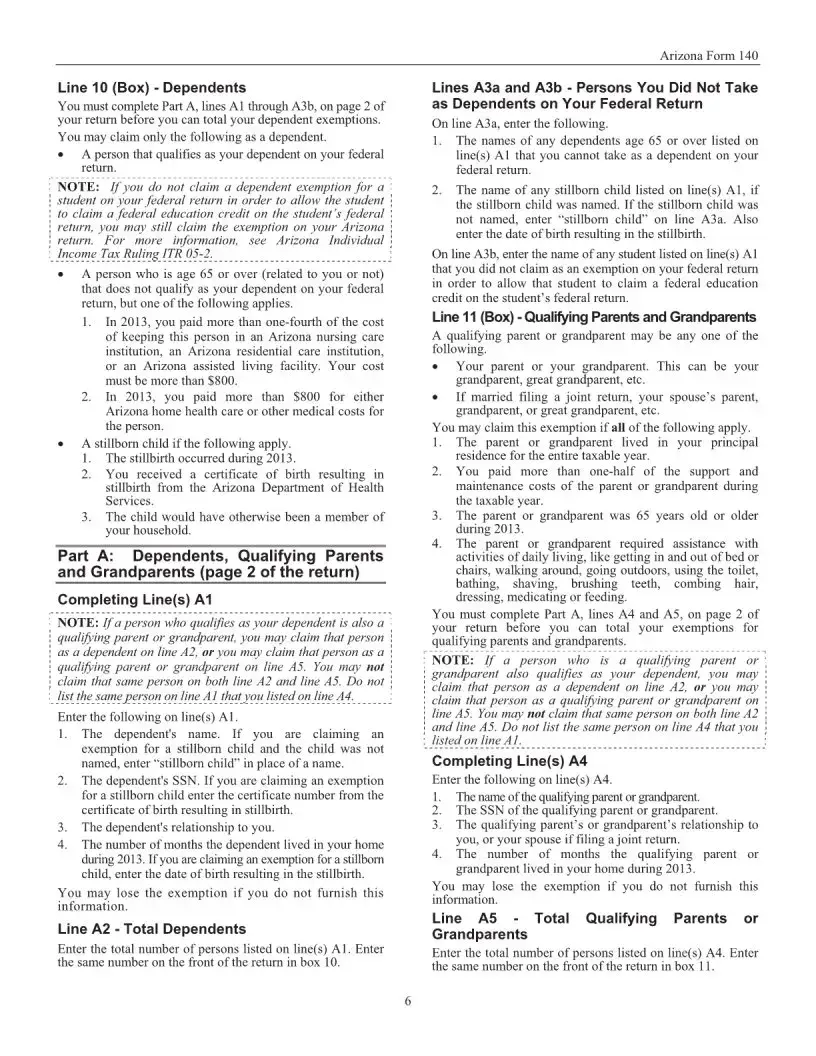The Arizona Form 140 is similar to the Federal Form 1040, which serves as the standard individual income tax return for U.S. taxpayers. Both forms require individuals to report their income, claim deductions, and calculate their tax liability. While the 1040 is used at the federal level, the Form 140 is specifically designed for Arizona residents. Both forms also allow for various credits and deductions, but they differ in terms of state-specific regulations and adjustments that must be considered when filing.
Another document akin to Form 140 is the Arizona Form 140A, which is a simplified version of the full Form 140. This form is intended for taxpayers with less complex financial situations, such as those with lower income levels or fewer deductions. While both forms serve the purpose of filing state income taxes, Form 140A limits the types of deductions and credits that can be claimed, making it easier for those who qualify to complete their tax return.
The Arizona Form 140EZ is yet another related document, designed for even simpler tax situations. This form is the most straightforward option for filing Arizona state taxes and is available for individuals with a taxable income below a certain threshold. Like Form 140A, it streamlines the filing process by allowing only basic deductions and credits, making it ideal for those who may not have itemized deductions or complex financial circumstances.
Form 204, the Arizona Extension Request, shares similarities with Form 140 in that it allows taxpayers to request additional time to file their state income tax return. While Form 140 is the actual return, Form 204 is a critical document for those who need more time, enabling them to avoid penalties for late filing. Both forms require accurate reporting of income and other financial details, but they serve different purposes in the tax filing process.
Form 140 Schedule A is a companion document to Form 140 that allows taxpayers to itemize their deductions. This schedule is essential for those who have eligible expenses that exceed the standard deduction. Both forms work together to ensure that taxpayers can accurately report their financial situations and maximize their deductions, though Schedule A is specifically focused on itemized deductions.
The IRS Form 8862, which is used to claim the Earned Income Tax Credit (EITC) after a disallowance, is comparable to Form 140 in that it addresses specific tax credits. While Form 140 allows Arizona residents to claim various credits, including state-specific ones, Form 8862 is focused on federal tax credits and is crucial for taxpayers who have previously faced issues with their EITC claims. Both forms require accurate reporting and documentation to ensure compliance with tax regulations.
Form 1040-SR, designed for seniors, parallels Form 140 in that it caters to a specific demographic with unique tax considerations. Both forms allow individuals to report their income and claim deductions, but Form 1040-SR includes features tailored for older taxpayers, such as a larger font and simplified options for reporting retirement income. This makes it easier for seniors to navigate their tax responsibilities, similar to how Form 140 addresses Arizona residents' needs.
The Arizona Form 131, which is used for claiming a property tax credit, is related to Form 140 as it also pertains to tax benefits available to residents. While Form 140 covers overall income tax returns, Form 131 specifically targets property tax relief. Both forms require residents to provide detailed information about their financial situation, but they focus on different aspects of tax liability and benefits.
Form 1099-MISC, used to report miscellaneous income, shares a connection with Form 140 in that it provides essential income information that must be reported on state tax returns. Taxpayers who receive income reported on a 1099-MISC must include that income when filing their Form 140, ensuring that all earnings are accounted for. Both forms are integral to the overall tax reporting process, with the 1099-MISC serving as a source of income documentation.
Lastly, the IRS Form W-2 is similar to Form 140 in that it reports wages and salary income. Employees receive a W-2 from their employers, detailing their earnings and taxes withheld. This information is crucial for completing Form 140, as it helps taxpayers accurately report their income for state tax purposes. Both forms rely on accurate income reporting to determine tax liability, making them interconnected in the tax filing process.
